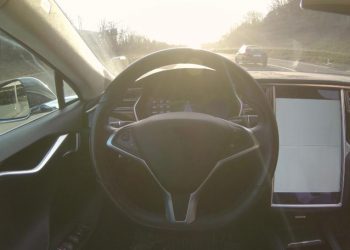Could you imagine the day when your automobile insurance fee goes down every month? This could effectively take place as self-driving car makers (SDCMs) manage the car insurance operation.
As it seems, SDCMs have numerous effective benefits to carry out so.
Their main incentive is to get rid of a fostering obstacle to self-driving cars: The cost, and also the availability, of car insurance can be a defense when buying an autonomous vehicle for buyers, along with the new generation of “taxi” firms. Today’s necessary car insurance provider don’t have record tables for accidents and fatalities for self-driving cars since self-driving cars aren’t yet in circulation. As a consequence, they are likely to be conservative and set high initial costs for insuring autonomous vehicles.
By contrast, SDCMs will have the next best thing to real-life statistics– they have data centers full of data not only about accidents but also about near misses (albeit for their own cars only). This means they can generate accurate statistics about accidents of their own cars as often as they want and thus estimate the cost to insure their cars. An SDCM will be able to turn a barrier to adoption into a potential sale.
Furthermore, by offering car insurance themselves, the self-driving car manufacturers not only remove a barrier to adoption to their product but they also project confidence in their product. In addition, SDCMs will improve a customer’s purchase experience by eliminating one painful step in the car purchase process (because who enjoys shopping for car insurance?), as well as eliminate a third party in the process. Even better, pricing for car insurance will be greatly simplified since the most important variable in the pricing equations– the human– will be taken out of the system. The price of insurance will be determined by the hardware and software installed in the car– not by the human driver. Whether it’s a 16-year-old who just passed their driver’s license exam, a soccer mom with 15 years of accident-free driving or a retired senior, the price will be the same assuming the technology in the car is the same in all three scenarios.
By the way, according to a US Market Research Report on automobile insurance by IBISWorld, the industry revenues totaled $259 billion in 2017. This is no small market, which, in and of itself, provides ample motivation for the self-driving car manufacturers to enter this market.
Since they will have actual real-time data on accidents and fatalities, SDCMs will radically drive down the cost of car insurance and make car ownership more affordable, thus expanding their market. Furthermore, reducing accidents is one of their primary business drivers to increase adoption. This will provide another incentive to drive down the cost of car insurance.
Since self-driving cars will only be commercialized once SDCMs have proved that they are safer than human-driven cars, at that point in time, SDCMs will be in a position to compute the exact probabilities of accidents and their cost because they will have all the data in their data centers. Beth Buczynski is correct in predicting in her article “With Self-Driving Cars, Auto Insurance’s Time Is Limited” that the cost of auto insurance will fall significantly over time and that consumers will no longer pay directly for auto insurance. However, auto insurance will not disappear, because self-driving cars, won’t eliminate all accidents. This liability will no longer be carried by consumers but either by the “robot-taxi” companies or by the SDCMs.
Most importantly, SDCMs will be able to offer car insurance from the get-go as soon as they market self-driving cars because they will be able to offer it at a much lower price than traditional insurance companies. SDCMs will need this cost reduction to help offset the additional cost of the autonomous driving equipment in order to reduce the total cost of ownership of their product.



